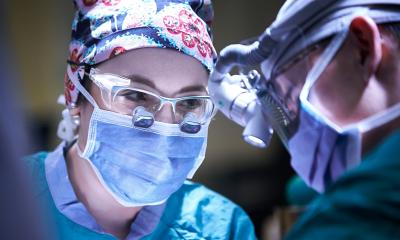Dräger celebrates half a century of Vapor care
For half a century, day after day, Dräger's Vapor has saved lives. Yet no patient knows this. Only the anaesthetist and surgical team can be fully aware of its value in keeping their patients unconscious and pain free during surgery, Dräger reports proudly, in the 50th year of Vapor's service.

Delivering anaesthetics could never be exact until the mid-20th century, when new technologies and alternative liquid anaesthetics arrived, stimulating demand for a new and precise dosing technique. In 1958 Dräger produced Vapor, a calibrated dosing device that could be attached to the anaesthesia equipment that supplies fresh gas. Vapor adds the anaesthesia dose and concentration as defined and set by the anaesthetist to the fresh gas. Although the dosing (bypass) mechanism used by the Vapor has changed very little, the device’s technology is continuously optimised, the firm points out.
Materials
Impressively, Vapor never needs recalibration. Special stainless steel and brass alloys in the device ensure a long service life, resistance to alteration, and pressure and temperature compensation, the manufacturer points out. Other features include a bypass mechanism that is adjusted down to micrometer level, and the dosage area is free of aluminium, which may react with the anaesthetic.
Transportable and standard bottle refills
Today’s five main types of liquid anaesthetics – sevoflurane, desflurane, enflurane, halothane and isoflurane – are used in various ways, according to clinical indication, but each needs its own Vapor. This means that the vaporizer must be moved, in a sealed state, between hospital departments. To make this easier, Dräger integrated a patented transport setting, a hand wheel, and this hermetically seals the vaporizer (prior to this, the device had to be emptied each time). ‘Even if only a minute of aesthetic remains in Vapor, the vaporizer’s 300 ml tank accommodates standard 250 ml refills, thus virtually eliminating wastage,’ explains Dräger.
Special Applications
When a patient needs to be sedated for an MRI scan, Vapor can be used in conjunction with a Fabius magnetic resonance tomography (MRT) anaesthesia unit. Vapor is interoperable with 1.5 tesla and 3-T MRT systems.
The Vapor output remains stable within physician-defined anaesthesia dosage at temperatures ranging from 10 to 40°C. This is particularly important for bone surgery, where the operating theatre temperature of 15°C is maintained, or for surgery on burn victims, for which theatre temperature must be raised, Dräger points out.
01.09.2008











